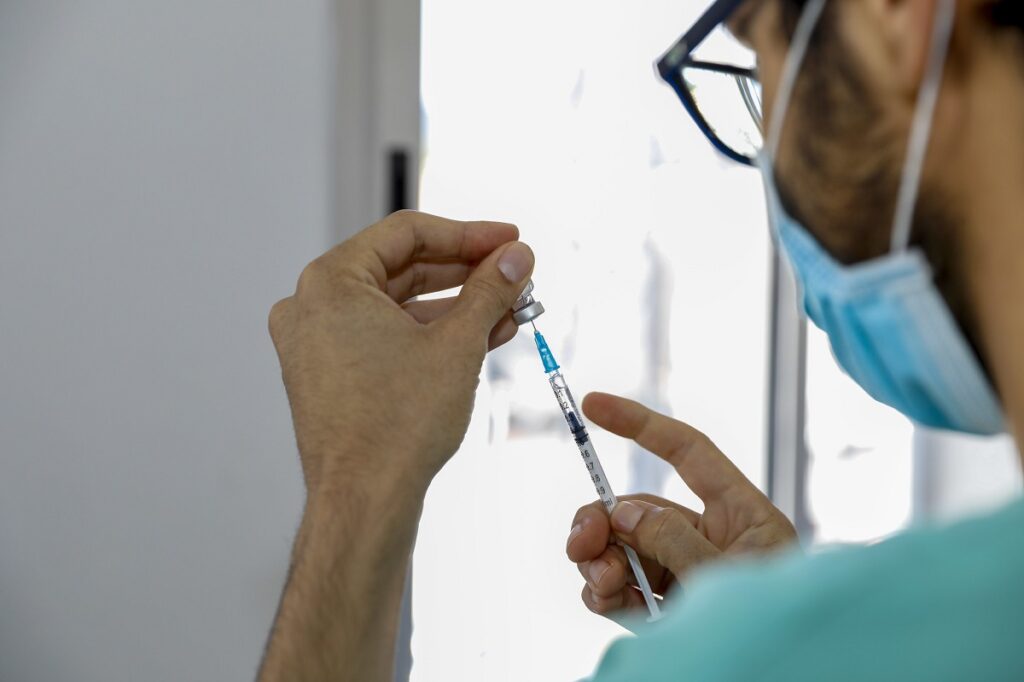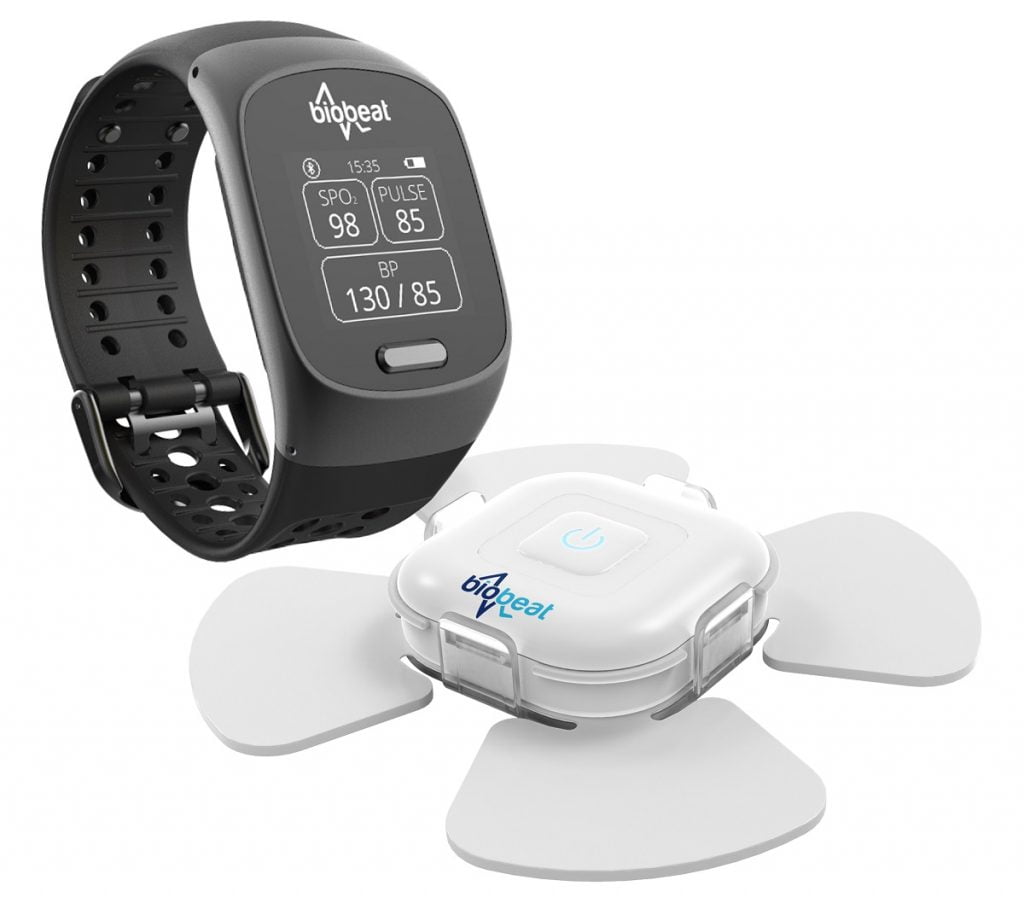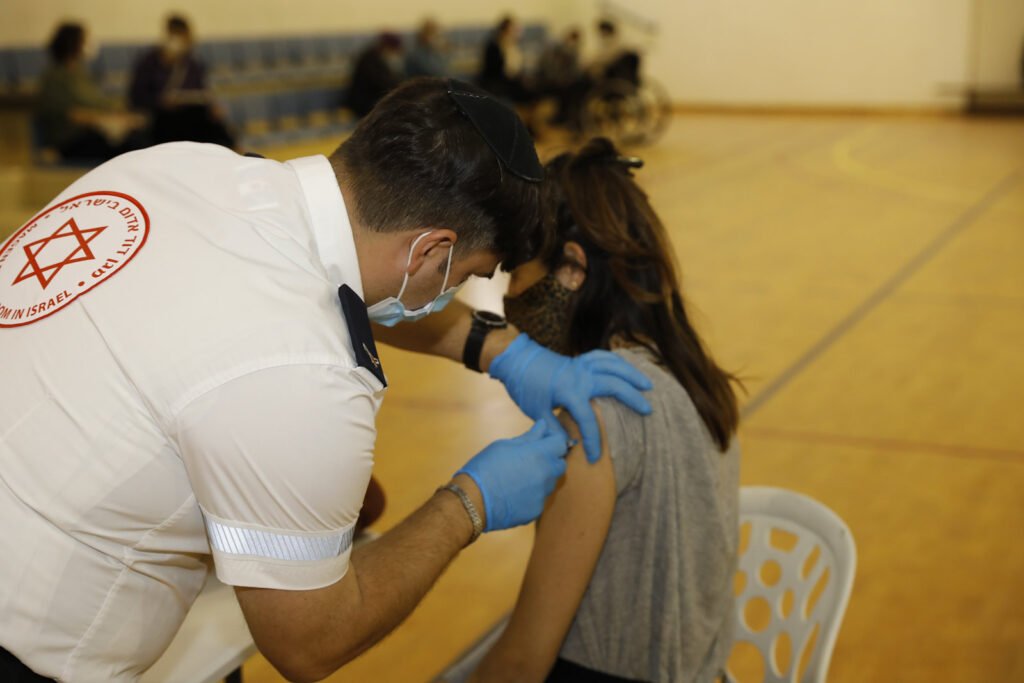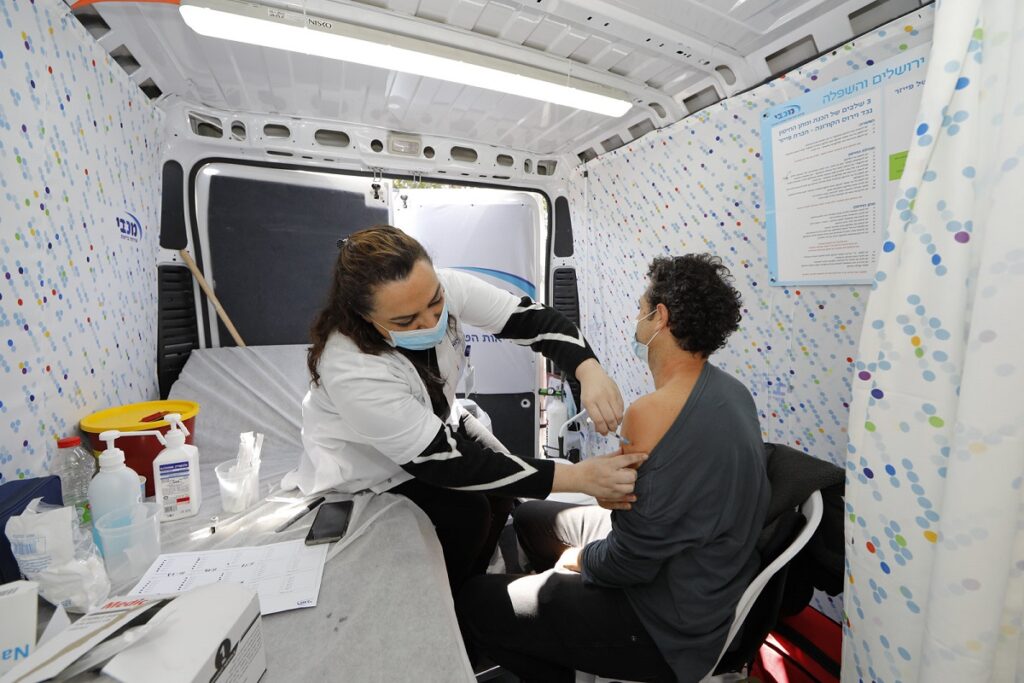Israeli researchers have developed what they believe is a more accurate and objective method to test vaccine safety using physiological parameters (body temperature, heart rate) collected by smart sensors, rather than testing response to the vaccine based on the person’s feelings.
As part of the study, a team of scientists from Tel Aviv University attached electronic FDA-approved sensors from Biobeat, an Israeli startup that develops advanced wearable AI-powered remote patient monitoring (RPM) solutions, to some 200 participants who were receiving the second COVID-19 vaccine at the time. The results were then published in the journal Communications Medicine.
The study was led by Dr. Yftach Gepner of the Department of Epidemiology and Preventive Medicine at TAU’s Sackler Faculty of Medicine, alongside Dr. Dan Yamin and Dr. Erez Shmueli from TAU’s Fleischman Faculty of Engineering.

Prior to the study, the majority of clinical trials designed to test vaccine safety relied on answers written in self-reported questionnaires, which would yield biased results.
When Dr. Gepner looked at studies that assessed the safety of the COVID-19 vaccine, he was “quite surprised that in 2021, researchers were basically relying on self-reported subjective assessments of the safety response of the vaccine,” he tells NoCamels in a Zoom interview.
“Let’s assume that I was going to give you a shot of the vaccine. Afterward, I will basically rely on what you’re going to report to me. It becomes a bit of a fixed bias of the response. Some of the participants will have an overestimation and some will have the placebo effect but it’s less accurate,” he explains.
“This is clearly a totally subjective report,” he said in a TAU statement, “Even when Pfizer and Moderna developed their vaccines for the new COVID-19 virus, they used self-reports to prove their safety.”
Biobeat sensors are approved by the US Food and Drug Administration (FDA) to read physiological vitals such as heart rate, blood pressure, and respiratory rate. The TAU team wanted the medical-grade sensors to measure those vitals as well as blood oxygen levels, heartbeat volume, body temperature, and cardiac output, from one day before to three days after receiving the vaccine.
“From a practical perspective, we wanted to conduct the study as fast as possible. And we knew that these gout days during the second dose of the vaccine is that one that causes the most side effects,” says Dr. Gepner.
Sign up for our free weekly newsletter
Subscribe
“It was basically four days of monitoring. Every five minutes, the sensor collected all the parameters, either respiratory or cardio vitals,” Dr. Gepner says, “We collaborated with the group from the engineering faculty at the university. They have a mobile app in-house where the subject reported his or her symptoms and we combined the two.”
Dr. Gepner tells NoCamels that the study revealed a few interesting findings. First, the researchers found that most of the side effects (including reported elevated body temperature, increased heart rate, increased respiratory rate, and others) were most apparent in the first 48 hours after the vaccination, and after those 48 hours were up, the physiological parameters returned to their baseline.
“So the first statement is that the vaccine is safe,” Dr. Gepner declares.
There was also a significant discrepancy between the self-reported assessments related to side effects and the actual measurements.
“What was most surprising was that there was this disassociation between the physiological response and the reported symptoms,” he says, “Some participants reported a mild or severe physiological response, while in the sensor, we didn’t detect any changes. On the other hand, those that reported no symptoms had some of the symptoms.”
This disassociation drives the idea that in 2022, the population needs to use technology “to move forward with a more accurate and sensitive assessment, not only for new vaccines but for new treatments. If you want the population to trust the regulations on a higher level — that there are no conspiracies and less people that have concerns about the vaccines — here we provide an objective, continuous, and accurate assessment,” says Dr. Gepner.

“A randomized clinical trial might be needed to move forward to an objective assessment in terms of safety, versus subjective assessment using questionnaires,” he adds.
“The message from our study is clear,” Dr. Gepner said in a university statement, “In 2022 the time has come to conduct continual, sensitive, objective testing of the safety of new vaccines and therapies. There is no reason to rely on self-reports or wait for the occurrence of rare side effects like myocarditis, an inflammation of the heart muscle, which occurs in one of 10,000 patients. Preliminary signs that predict such conditions can be detected with advanced sensors, identifying normal vs. extreme alterations in physiological parameters and any risk of inflammation. Today trial participants are invited to the clinic for blood pressure testing, but often their blood pressure rises just because the situation is stressful. Continual monitoring at home solves these problems with simple, convenient, inexpensive, and accurate means.This is the kind of medicine we should strive for in 2022.”
Related posts

Israeli Medical Technologies That Could Change The World

Harnessing Our Own Bodies For Side Effect-Free Weight Loss

Missing Protein Could Unlock Treatment For Aggressive Lung Cancer




Facebook comments